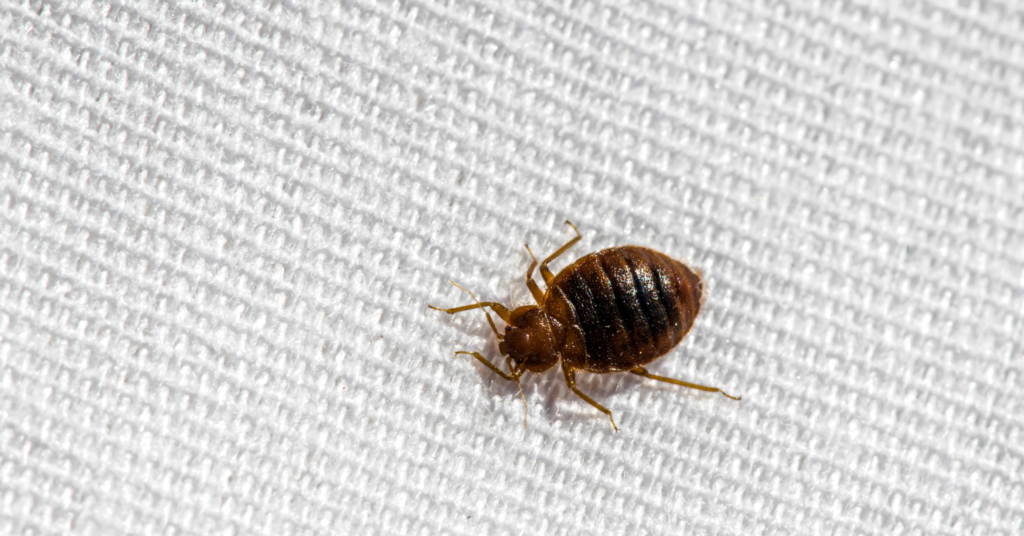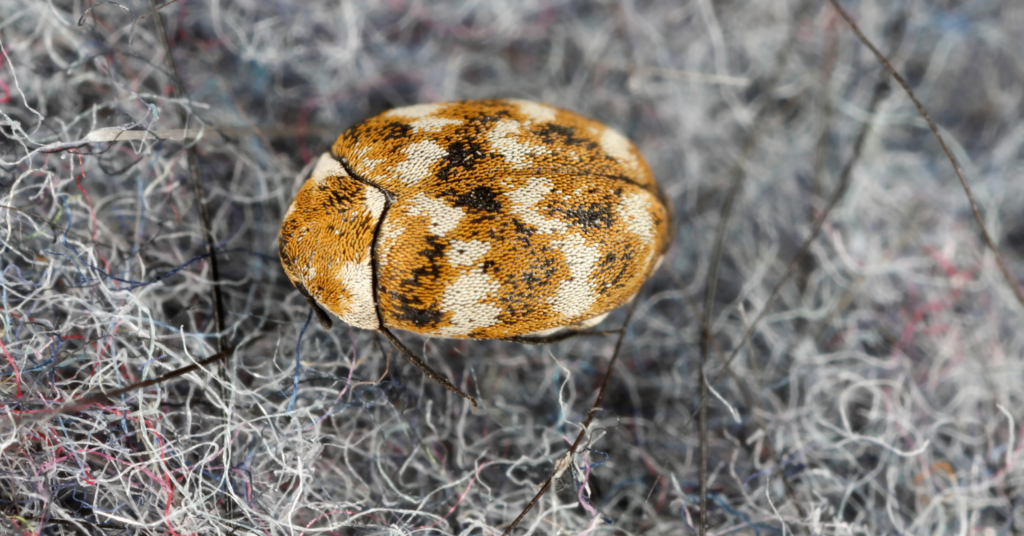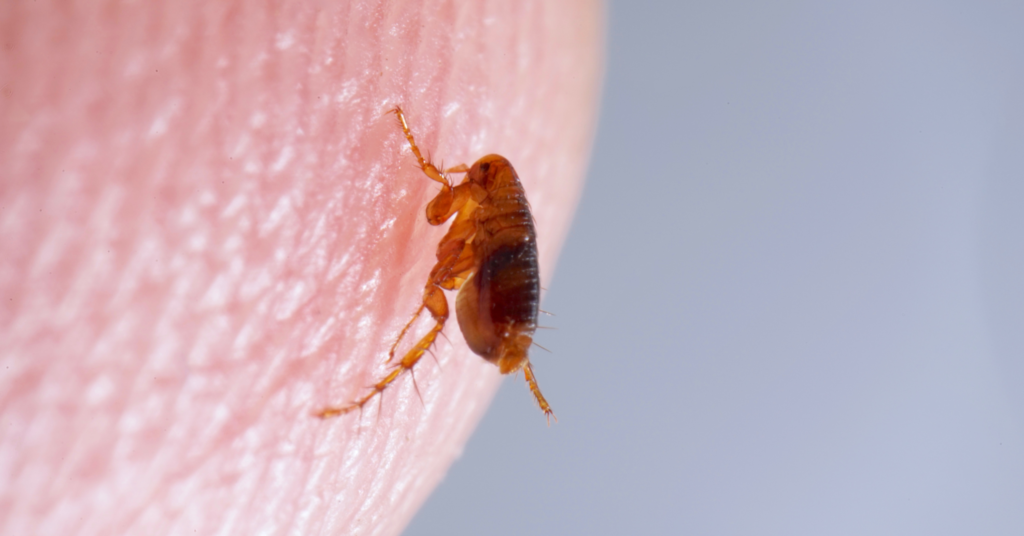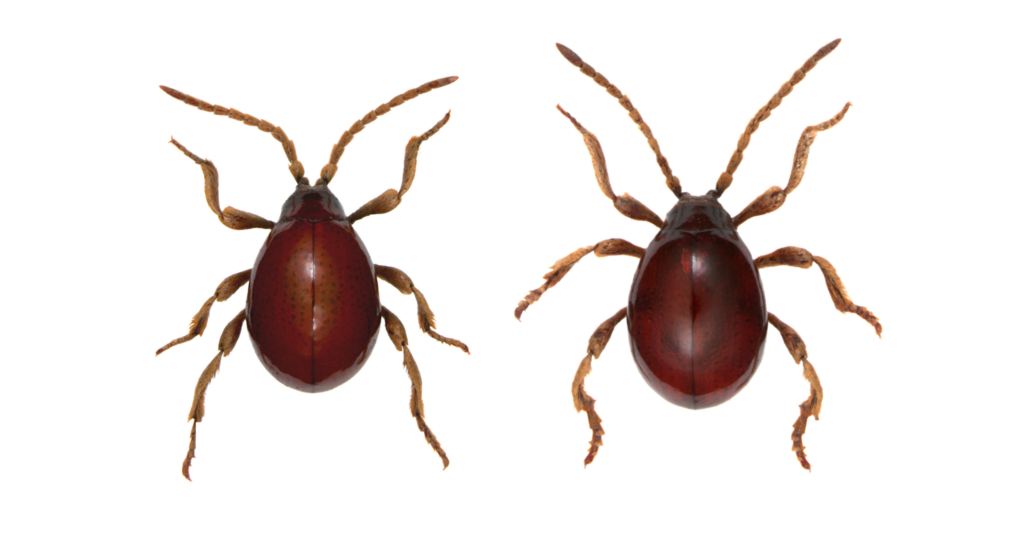Bedbug Look-alikes

You’re checking into a hotel, excited to begin your vacation when suddenly you spot a tiny bug in the room. If you’re worried it’s a bedbug, you’re not alone. Many people fear these biting bugs, but fortunately, not every small bug is a bedbug. Learn how to identify common bedbug look-alikes in this blog post.
WHAT IS A BEDBUG?
Bedbugs are tiny, parasitic insects that feed on the blood of sleeping humans and animals. Adult bedbugs are the size of apple seeds and are reddish-brown in color. They have flat, oval-shaped bodies that balloon after feeding. Their bites can leave itchy red marks.
These critters are skilled hiders, often able to easily grow in numbers before being discovered. Even though they leave behind traces of their presence, bedbug infestations aren’t confirmed until an actual bug is found. The most common sign of bedbug activity is small, brown-colored stains that look like dots. These dots are blood and bedbug excrement. You may also be able to see bedbug eggs, white spheres about the size of a pinhead. The stains, eggs, and adult bedbugs are usually found along mattress seams, headboards, carpet edges, or other furniture cracks and crevices in a room.
Bedbugs can be spotted with the naked eye, though the eggs and nymphs may be harder to see. Correctly identifying a bedbug infestation is critical, since the wrong treatment plan can give the bugs added time to breed and multiply. When in doubt, consult a pest control expert.
BEDBUG LOOK-ALIKES
CARPET BEETLES
Description:
Carpet beetles are oval-shaped beetles that can grow up to ¼ inch long and range from black coloring to patterns of white, brown, yellow, and orange. These small insects are mostly known for the destruction caused by their larvae. Though adult carpet beetles have a taste for pollen, their larvae prefer to feed on carpet, wool, felt, and other similar items. Carpet beetle larvae will leave behind molted skins, as well as fecal pellets, as they feed and develop.
Where do you find them?
Carpet beetles lay eggs on fabric items stored in the back of a closet, areas where pet hair congregates, or even on taxidermy. Ideal spots for carpet beetle larvae are spaces that are dark and undisturbed. Adult carpet beetles may congregate on windowsills. If you spot adults, there’s a good chance that larvae are also present in the house.
Why are they mistaken for bedbugs?
The shape and coloring of bedbugs and carpet beetles differ, but one commonality is the places they choose to hide. Like bedbugs, carpet beetles can often be found along the edges of carpets or furniture. Don’t worry, though, carpet beetles don’t bite. Carpet beetles have wings, while bedbugs do not have wings and cannot fly.
FLEAS
Description:
Fleas are tiny insects that are brown to reddish-brown color. They have long hind legs that they use to jump. A flea can jump about six inches vertically. Fleas feed on the blood of animals and humans and can eat up to 15 times their body weight in blood in a single day. Their bites can cause irritation like rashes or itchy bumps. Mating and egg laying can happen within the first 24 hours of fleas finding a host, allowing them to multiply quickly. Pest management for fleas may require an indoor and outdoor approach depending on the severity of the infestation.
Where do you find them?
Fleas prefer the blood of animals to humans, so households with outdoor pets may find fleas in indoor areas their pet commonly visits. Pets can transport fleas from kennels, groomers, or outdoors, even just in your yard. The “white-sock test” is a great way to diagnose this type of infestation. Walk around your property with white athletic socks pulled up as high as they can go on the leg. If fleas are present, they will latch on to the socks and can be seen on top of the white background.
Why are they mistaken for bedbugs?
Though their coloring is similar, one reason a flea infestation may be mistaken for bedbugs is because both species rely upon and feed on a host. Flea bites may produce similar itchy welts that bedbugs cause on some individuals. If you get close enough, it can be relatively easy to spot the difference in the shape of a flea compared to a bedbug. And if you see the bug jump, you can automatically mark bedbug off your list of insect suspects.
SPIDER BEETLES
Description:
As their name suggests, spider beetles resemble spiders with their long legs and round abdomens. These insects feed and breed on a multitude of organic material that can range from dried fruits to taxidermy. The three different species of spider beetles only grow to around 4 millimeters. Like many stored-food pests, the elimination of this insect depends greatly on finding and getting rid of its food source.
Where do you find them?
Spider beetles prefer dark, damp areas, and when indoors are found in attics, within cracks in floorboards or walls, and in other similar locations. Commercially, they’re mostly found in bakeries and granaries.
Why are they mistaken for bedbugs?
Besides their small size and rounded shape, spider beetles have a reddish-brown coloring, similar to that of bedbugs. They’re also elusive like bedbugs and primarily feed at night, so spotting one may be rare. Unlike bedbugs, spider beetles do not bite people or animals.
Other bedbug look-alikes recognized by pest control professionals include bat bugs, book lice, and swallow bugs. These critters are seldom found within homes, however, and people are less likely to come into contact with them.
If you suspect you have bedbugs, don’t delay in contacting the experts at Moxie Pest Control. Do-it-yourself treatments aren’t effective for these resilient pests, and it often takes multiple treatments to fully eradicate these biting pests. Our field experts are specially trained in bedbug removal and treatments, so call us to reclaim your home and peace of mind.
SOURCES
https://joshuaspestcontrol.com/blog/how-to-prevent-bedbugs/
https://pestseek.com/bugs-that-look-like-bed-bugs/
https://ento.psu.edu/extension/factsheets/spider-beetles
https://entomology.ca.uky.edu/ef602
https://entomology.ca.uky.edu/ef601





